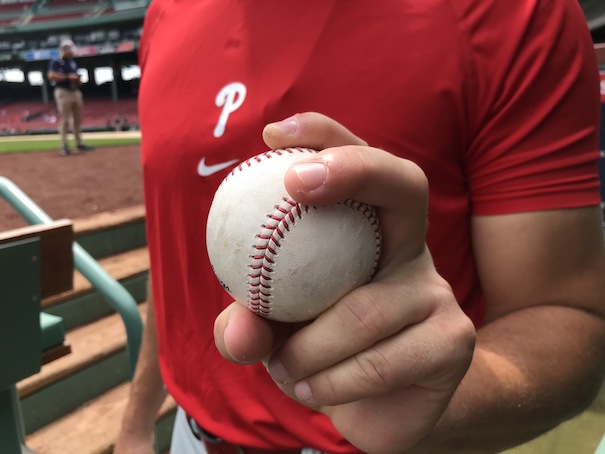The Phillies’ team defense, specifically their infield defense, has been bad. As a team they’ve allowed a .302 BABIP, which is sixth-highest in baseball, and while that’s not a catch-all metric for team defense, it is a fair shorthand. They are also in the bottom third of baseball in most advanced defensive metrics on the site and second to last in Defensive Runs Saved. The scouty, visual evaluation of their infielders reinforces this. Didi Gregorius will still make the occasional slick play, but he’s lost a step-and-a-half due to age, and so has Jean Segura. Rhys Hoskins and Alec Bohm have never been good defenders; they should probably be playing at DH and first base, respectively.
Freddy Galvis, who debuted as a Phillie, can’t change all of that on his own, but he will bring his leather wizardry back to Citizens Bank Park and help in this specific area. He has been the platonic ideal of a 45 FV player throughout his career: a flawed hitter with a one-note offensive skillset (in his case, empty power) who can play the heck out of shortstop or second base. His trademark pirouette and ability to make strong, accurate throws from his knees have led to a long highlight reel of defensive plays spanning nearly a decade in the big leagues. He and José Iglesias were both briefly part of the same middle infield in relative obscurity with the 2019 Reds, comprising what I believe is the best defensive middle infield tandem of this century.
The 31-year-old Galvis is currently out with a quad injury, but before being sidelined, he was producing on par with his career norms, which is to say he remains swing-happy, is going to run an OBP close to .300, and will smack a few doubles and homers here and there. It makes sense for him to spell Gregorious and Segura once in a while, especially when Zack Wheeler (50.4% ground ball rate) or the newly acquired Kyle Gibson (50.8%) start.
In exchange for Galvis, the Phillies sent Tyler Burch to the Orioles. A 23-year-old undrafted free agent from Lewis-Clark State, Burch was leading the org in swinging-strike rate at the time of the trade, whiffing 49 hitters in 30 innings (mostly at Low-A) at the time of the trade, though all of that has come in relief. Twenty-three-year-old relievers in A-ball aren’t exciting if you look at them like that, but Burch has real arm strength (93–96 mph, up three ticks from 2019) and a plus breaking ball, and he’s performing at a superlative level on paper. And because of when he signed (2019), there’s still time for him to be seasoned in the minors without occupying a 40-man roster spot.
The Phillies have a habit of trading pitching prospects away (I count eight in the last year) while struggling to maintain competitive pitching depth at the big league level. Netting Galvis fills a small need, one Philadelphia has also tried to address several times in the last year (remember Kyle Holder?). But Burch is the sort of piece recent Phillies clubs have been missing: a young, homegrown reliever who at the very least projects to provide depth and resiliency to injury without forcing the team to turn to reclamation projects or cost them real assets to acquire.
Phillies fans will, and should, be stoked to see Galvis back in the uniform. News of this deal made me feel like someone who quit smoking years ago catching a whiff of an early-morning cigarette on the walk to work. But they also gave up the pitcher missing bats at the highest rate in the org for a glove-first bench infielder who has been freely available on the open market several times in the last few years. It’s logical, but short-sighted.

